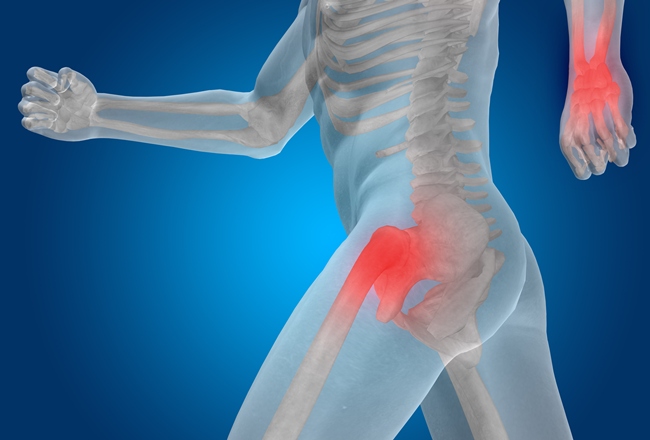Osteoarthritis is a joint disease that mostly affects cartilage. Cartilage is the slippery tissue that covers the ends of bones in a joint. Healthy cartilage allows bones to glide over each other. It also helps absorb shock of movement.
In osteoarthritis, the top layer of cartilage breaks down and wears away. This allows bones under the cartilage to rub together. The rubbing causes pain, swelling, and loss of motion of the joint. Over time, the joint may lose its normal shape. Also, bone spurs may grow on the edges of the joint. Bits of bone or cartilage can break off and float inside the joint space, which causes more pain and damage.
Osteoarthritis is the most common type of arthritis. People with osteoarthritis often have joint pain and reduced motion. Unlike some other forms of arthritis, osteoarthritis affects only joints and not internal organs. Rheumatoid arthritis – the second most common form of arthritis – affects other parts of the body besides the joints.
Osteoarthritis occurs most often in older people. Younger people sometimes get osteoarthritis primarily from joint injuries. The cause of osteoarthritis is unknown. Factors that might cause it include:
- Being overweight
- Getting older
- Joint injury
- Joints that are not properly formed
- A genetic defect in joint cartilage
- Stress on the joints from certain jobs and playing sports
Osteoarthritis can occur in any joint. It occurs most often in the hands, knees, hips, and spine. Warning signs of osteoarthritis include stiffness in a joint after getting out of bed or sitting for a long time, swelling or tenderness in one or more joints, and a crunching feeling or the sound of bone rubbing on bone.
No single test can diagnose osteoarthritis. Most doctors use several methods to diagnose the disease and rule out other problems, including reviewing your medical history and conducting physical exam. You may also need tests such as X-rays, blood tests, or exams of the fluid in the joints.
Doctors often combine treatments to fit a patient’s needs, lifestyle, and health. Osteoarthritis treatment has four main goals: (1) to improve joint function; (2) to keep a healthy body weight; (3) to control pain; and (4) to achieve a healthy lifestyle.
Osteoarthritis treatment plans can involve exercise, weight control, rest and joint care, non-drug pain relief techniques to control pain, medicines, complementary and alternative therapies. Surgery is usually the last resort.
Michael L. Brit, M.D., specializes in Rheumatology and Internal Medicine as a part of University Rheumatology Associates at Erlanger Health System Baroness Hospital. For more information or to schedule an appointment, please call 423-778-2564.







